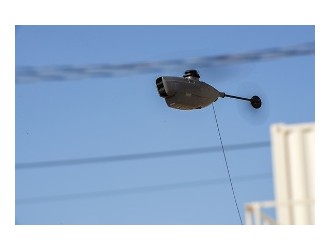Jen had spent weeks looking for the perfect toy for her daughter for Christmas. Then she found it online and placed the order. only days before Christmas, she chose drone delivery as the delivery option because the e-commerce site said it would be delivered on December 23, just in time to make it a memorable Christmas for her 6-year-old.
Then it snowed. Delivery was moved to December 24, but that morning, Jen received a notice from the seller that the toy would not be delivered until December 27 because of “higher order volume” due to “unforeseen weather delays.”
Jen was devastated.
While fictional, similar scenarios play out on a daily basis around the country as e-commerce delivery drivers must navigate weather, traffic congestion, and other issues. Drones are supposed to fix these issues, but research suggests that using drones for deliveries could result in as many delays, if not more.

Weather Delays
University of Calgary researchers Mozhou Gao, Chris H. Hugenholtz, Thomas A. Fox, Maja Kucharczyk, Thomas E. Barchyn and Paul R. Nesbit published a paper this summer that looked at the impact weather had on drone flyability.
Its conclusion: Expect delays.
The paper looked at common commercial drones (CD), defined by the authors as havin “the median weather tolerance of the 50 most commonly registered drones.” The authors reviewed historical weather data over a 10-year period in 100 of the world’s most populous cities and compared it to manufacturer-provided drone weather tolerances for both common commercial drones and drones said to be weather resistant to determine flyability times.
Common drones featured an operational temperature range of 32 F up to 104 F with a maximum wind speed resistance of 22 mph. The authors also studied weather-resistant drones (WRD) using minus 4 degrees to 114 F, wind speed of 31 mph and 1.9 inches per hour of rain as the guidelines.
The ultimate conclusion is that for most common drones, weather conditions could limit drone flying time to just a few hours per day—approximately 5.7 hours per day or 23.6 percent of the time. WRDs would be available more often, up to 20.4 hours per day or 85 percent of the time.
“However, these overall flyability percentages do not distinguish between daylight-only and day-and-night operations,” the report said. “Some time-sensitive commercial drone applications, such as business-to-business deliveries or accident scene reconstruction, are typically bracketed by daylight hours. Including daylight-only constraints reduces global flyability to 8.3 percent and 51.3 percent for CDs and WRDs, respectively.”
Depending on location, the time a drone can fly could be dramatically impacted. For instance, in Glasgow, Scotland, wher it rains an average of 170days a year, drones could be grounded for long periods of time.
Winds Aloft
And it’s not just the weather we can see that impacts drones but also the weather we can’t—wind speeds at 200 or 500 feet off the ground, for instance.





